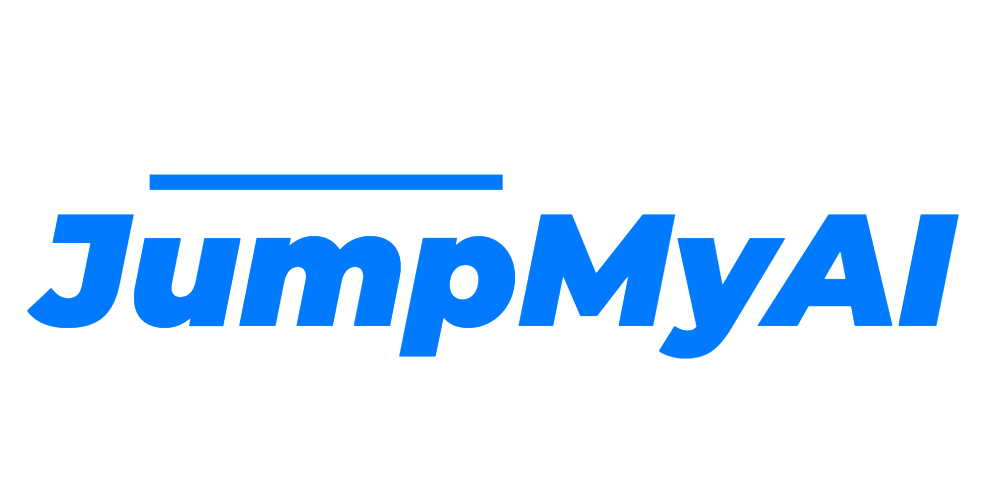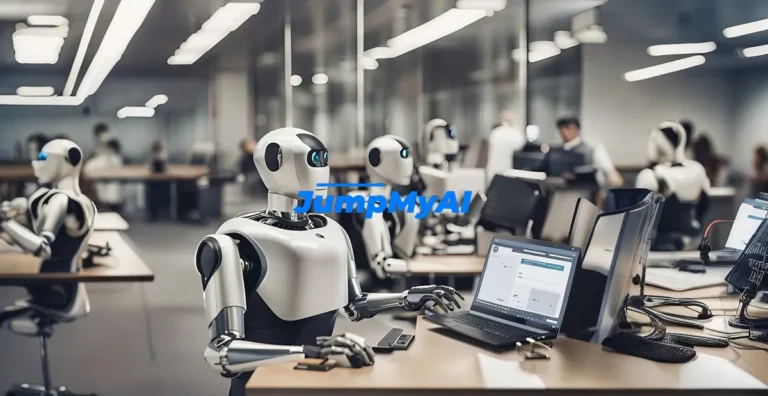Baby AGI vs Auto GPT: The Battle for AI Supremacy
In the rapidly evolving landscape of artificial intelligence (AI), two technologies have emerged as significant game-changers: Baby AGI and Auto GPT. Developed by OpenAI, these AI systems are pushing the boundaries of what is possible in the realm of machine learning and natural language processing.
Baby AGI vs Auto GPT: Unleashing the Power of OpenAI’s Revolutionary AI Systems for Unprecedented Breakthroughs in Machine Learning and Natural Language Processing.
Part 1: Importance
1.1. Importance of the topic in the current AI landscape
The importance of understanding Baby AGI and Auto GPT cannot be overstated. As AI continues to permeate every aspect of our lives, from business and finance to healthcare and entertainment, these technologies are set to play a pivotal role in shaping the future of AI. Their unique capabilities and applications make them invaluable tools in the quest for artificial general intelligence (AGI).
1.2. Overview of the article
This article aims to provide a comprehensive understanding of Baby AGI and Auto GPT. We will delve into what these technologies are, the technology behind them, and the role of OpenAI in their development. By the end of this article, you should have a clear understanding of these innovative AI systems and their potential impact on the AI landscape.
Part 2: Understanding Baby AGI and Auto GPT
2.1. What is Baby AGI?
Baby AGI is a Python script developed by Yoheinakajima, which uses OpenAI, LangChain, Pinecone, and Chroma to create, execute, and prioritize tasks. The “AGI” in Baby AGI refers to Artificial General Intelligence, which refers to human cognitive capabilities and abilities in the form of software or code. Baby AGI uses OpenAI’s GPT-4 model as its core language model, and LangChain is the back-end framework.
2.2. What is Auto GPT?
Auto GPT is an experimental open-source application based on the GPT-4 model. It is driven by Large Language Model (LLM) and Natural Language Processing (NLP), extending the possibility of what AI can do. Released on 30th March 2023, Auto GPT can provide our requirements without any human guidance. It has access to the Internet, making it an ideal tool for market research, optimizing your business, sending emails, and debugging codes.
2.3. The technology behind Baby AGI and Auto GPT
Both Baby AGI and Auto GPT utilize the GPT-4 API to complete tasks such as automating cryptocurrency trading tasks. They both incorporate natural language processing and memory retention capabilities of GPT-4 to improve trading performance. They are based on the GPT architecture, NLP (Natural Language Processing), and LLM. They can generate human-like responses to prompts and require large-scale training data to improve language generation capabilities.
There are many generative AI companies coming up rapidly which provide new models that can be used with Baby AGI and Auto GPT.
2.4. The role of OpenAI in the development of Baby AGI and Auto GPT
OpenAI, a leading research organization in the field of AI, has played a pivotal role in the development of both Baby AGI and Auto GPT. By providing the foundational GPT-4 model and fostering an environment of innovation and experimentation, OpenAI has enabled the creation of these advanced AI systems. Through their ongoing research and development efforts, OpenAI continues to push the boundaries of what is possible in the realm of AI.
Part 3: Comparing Baby AGI and Auto GPT
3.1. Structure of Baby AGI and Auto GPT
Both Baby AGI and Auto GPT are built on the GPT-4 model, making them significantly similar in their working AI mechanism. They both use the same GPT architecture and Language models. However, they differ in their structure in terms of purpose, use cases, learning approach, and features like voice command and image generation.
3.2. Techniques used by Baby AGI and Auto GPT
Baby AGI and Auto GPT utilize the GPT-4 API to complete tasks such as automating cryptocurrency trading tasks. They both incorporate natural language processing and memory retention capabilities of GPT-4 to improve trading performance. They are based on the GPT architecture, NLP (Natural Language Processing), and LLM. They can generate human-like responses to prompts and require large-scale training data to improve language generation capabilities.
3.3. Purpose of Baby AGI and Auto GPT
The purpose of Baby AGI and Auto GPT differs. Auto GPT is a Language model that can generate human-like text responses based on the user’s prompts. However, Baby AGI is a reinforcement learning algorithm that can constantly learn from the environment and user’s prompts. Therefore, they differ in the purpose they are built for and their learning algorithms.
3.4. Results produced by Baby AGI and Auto GPT
Auto GPT can generate high-quality texts, which are rather difficult to distinguish from texts written by humans. Its performance is better than Baby AGI as it is not limited to the training data. However, Baby AGI can perform complex tasks with high accuracy and efficiency, but its performance is limited to its training data.
Part 4: Strengths and Weaknesses of Baby AGI and Auto GPT
4.1. What Baby AGI does that Auto GPT doesn’t
Baby AGI is commonly used for decision-making and control tasks. You can also use Baby AGI in robotics, game playing, and autonomous driving. It is a Python script that functions as an AI-powered task management system with a pre-defined objective.
4.2. What Auto GPT does that Baby AGI doesn’t
Auto GPT is primarily used for natural language processing tasks such as text summarization, content generation, and language translation. It can translate more than 17+ natural languages. Auto GPT can generate code and retains information across multiple sessions. It can generate images using DALL-E and has a voice command feature.
4.3. The strengths and weaknesses of Baby AGI
The strength of Baby AGI lies in its ability to perform complex tasks with high accuracy and efficiency. It can constantly learn from the environment and user’s prompts. However, its performance is limited to its training data, and it doesn’t have features like image generation and voice command.
4.4. The strengths and weaknesses of Auto GPT
Auto GPT can generate high-quality texts, which are rather difficult to distinguish from texts written by humans. It has features like image generation and voice command. However, it is primarily used for natural language processing tasks and may not be as effective for decision-making and control tasks as Baby AGI.
Part 5: Use Cases and Applications of Baby AGI and Auto GPT
5.1. Use Cases of Baby AGI
Baby AGI, with its reinforcement learning approach, is designed to learn from the environment and user prompts. It is commonly used for decision-making and control tasks. Here are some of the key use cases:
- Robotics: Baby AGI can be used in robotics to make robots more intelligent and capable of performing complex tasks.
- Game Playing: Baby AGI can be used in game playing to develop AI that can learn and adapt to different gaming scenarios.
- Autonomous Driving: Baby AGI can be used in autonomous driving to make vehicles smarter and safer.
5.2. Use Cases of Auto GPT
Auto GPT, on the other hand, is primarily used for natural language processing tasks. Here are some of the key use cases:
- Text Summarization: Auto GPT can be used to summarize large amounts of text data, such as books, articles, and websites.
- Content Generation: Auto GPT can be used to generate high-quality texts that are difficult to distinguish from texts written by humans.
- Language Translation: Auto GPT can translate more than 17 natural languages, making it a powerful tool for cross-language communication.
5.3. The Impact of Baby AGI and Auto GPT on Various Sectors
The impact of Baby AGI and Auto GPT on various sectors is profound. In the tech industry, they are changing how we perceive and work with Artificial Intelligence. They are making AI more autonomous and capable of performing complex tasks without any human guidance. In the business sector, they are optimizing businesses by automating tasks, generating high-quality content, and providing market research. In the education sector, they are revolutionizing learning by providing personalized learning experiences.
5.4. Future Prospects of Baby AGI and Auto GPT
The future prospects of Baby AGI and Auto GPT are promising. With their unique features and capabilities, they are expected to play a significant role in the future of AI. Auto GPT, with its ability to generate high-quality texts and translate languages, is expected to become an essential tool for content creators, translators, and educators. Baby AGI, with its ability to learn from the environment and perform complex tasks, is expected to revolutionize industries like robotics, gaming, and autonomous driving.
Part 6: Conclusion and FAQs
6.1. Summary of the Article
In this article, we have explored the concepts of Baby AGI and Auto GPT, their similarities and differences, and their use cases and applications. We have seen that while they are similar in many ways, they differ in their purpose, use cases, learning approach, and features. We have also seen that they have a significant impact on various sectors and hold promising future prospects.
6.2. Personal Opinion and Final Thoughts
In my opinion, both Baby AGI and Auto GPT are revolutionary developments in the field of AI. They are making AI more autonomous and capable of performing complex tasks without any human guidance. However, they are not without their challenges. For instance, Baby AGI’s performance is limited to its training data, and Auto GPT requires large-scale training data to improve its language generation capabilities. Despite these challenges, I believe that with further research and development, they can overcome these limitations and play a significant role in the future of AI.
To know more about how ChatGPT handles user’s data, refer to our article: Does ChatGPT Save Data? The Astonishing Facts Unveiled!
6.3. FAQs
What is the difference between Baby AGI and Auto GPT?
Baby AGI and Auto GPT both use GPT architecture and NLP as their core foundations. However, they differ in their purpose, use cases, learning approach, and features. Auto GPT is a Language model that can generate human-like text responses based on the user’s prompts. It uses unsupervised learning, which means it learns from unlabelled data without specific guidance. On the other hand, Baby AGI is a reinforcement learning algorithm that can constantly learn from the environment and user’s prompts. It is commonly used for decision-making and control tasks.
What is better than Auto-GPT?
The answer to this question depends on the specific use case. Auto GPT excels at natural language processing tasks such as text summarization, content generation, and language translation. However, for decision-making and control tasks, Baby AGI might be a better choice due to its reinforcement learning approach.
Is Auto-GPT any good?
Yes, Auto GPT is a powerful tool for natural language processing tasks. It can generate high-quality texts that are difficult to distinguish from texts written by humans. It can also translate more than 17 natural languages, making it a powerful tool for cross-language communication.
What is the difference between Auto-GPT and Agent GPT?
Auto GPT and Agent GPT are both AI models developed by OpenAI. However, they differ in their purpose and use cases. Auto GPT is primarily used for natural language processing tasks, while Agent GPT is designed to interact with users in a conversational manner.




